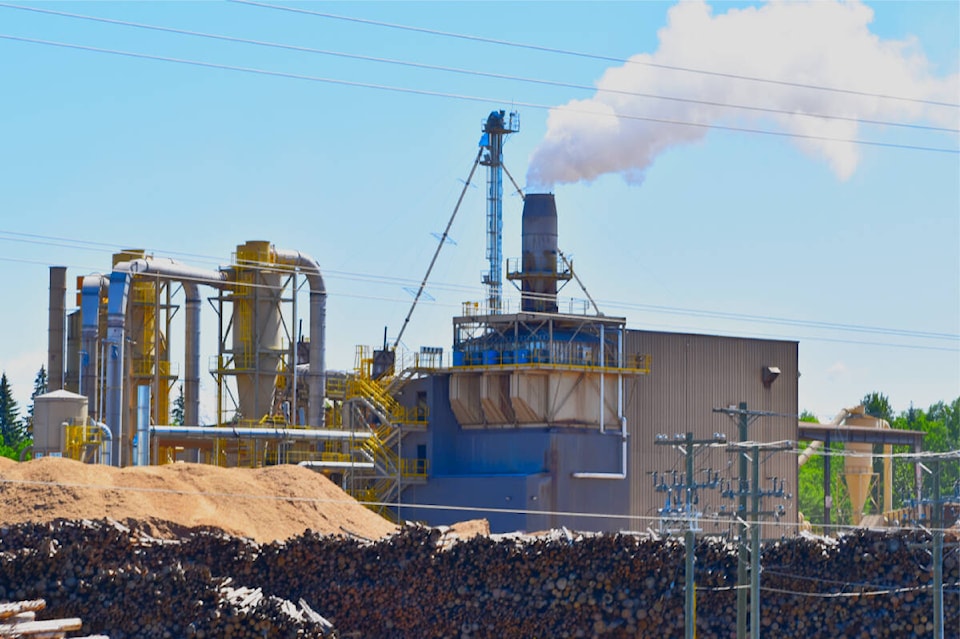A new report claims a sharp increase in wood-pellet exports is fuelling the loss of primary forests in B.C., but Forests Minister Bruce Ralston says that is not the case.
The Canadian Centre for Policy Alternatives released a 40-page report Tuesday (April 23), which tracks the surge in B.C. wood-pellet exports. It says B.C.sa���ʴ�ý�s forests are in crisis after decades of sa���ʴ�ý�intense loggingsa���ʴ�ý� that has sa���ʴ�ý�depleted and fragmentedsa���ʴ�ý� the forest industry, and now the demand of wood pellets is adding to the loss of B.C.sa���ʴ�ý�s primary forests.
Authored by Ben Parfitt, a resource policy analyst and former journalist, it includes six policy reforms from sa���ʴ�ý�dramaticallysa���ʴ�ý� increasing the protection of remaining and primary old-growth forests to zoning the provincesa���ʴ�ý�s forests and existing plantations into three broad categories to requiring by law that all timber-processing sa���ʴ�ý� includin g wood-pellet mills sa���ʴ�ý� must submit annual reports.
In the report, Parfitt says that unless there are significant changes in forest policy, sa���ʴ�ý�the likelihood is that even more of the shrinking stock of primary forests in BC and Canada will be logged to supply bioenergy companies with wood pellets.sa���ʴ�ý�
However, Ralston told reporters Wednesday (April 24) that sa���ʴ�ý�forests are not being turned into pellets,sa���ʴ�ý� adding that the source material for making pellets is sawmills, shavings, chips and forest residues.
He said all of those materials, which are taken to the Drax mills and made into pellets, would otherwise be burned in slash piles that sa���ʴ�ý�releases a lot of carbon and it wastes a lot of valuable forest products.sa���ʴ�ý�
The report notes that B.C. produces more wood pellets than any other Canadian province, and production is sa���ʴ�ý�dominatedsa���ʴ�ý� by U.K.-based company Drax, which owns the worldsa���ʴ�ý�s single-largest wood-burning facility. Drax also owns, or partially owns, eight of B.Csa���ʴ�ý�s 12 pellet mills and is responsible for 80 per cent of the provincesa���ʴ�ý�s exports.
B.C.sa���ʴ�ý�s wood-pellet exports are mainly driven by Japan and the U.K. which both burn millions of tonnes of pellets each year in thermal plants to generate electricity.
The report says B.C.sa���ʴ�ý�s trade in wood pellets has doubled in the past decade, led by massive increases to Japan following the 2011 earthquake and tsunami. The country switched to increase energy production from other sources, including thermal electricity plants that burn wood pellets after being faced with the loss of nuclear reactors that were damaged by the tsunami.
In the last decade, Japan has imported nearly 1.7 million tonnes of wood pellets, up from 61,700 tonnes in 2014, the report says.
But the report adds that in the same decade that Japansa���ʴ�ý�s demand for wood pellets soared, logging rates in B.C. fell by 38 per cent sa���ʴ�ý� and are expected to decline further.
The report includes six sa���ʴ�ý�essentialsa���ʴ�ý� policy recommendations:
sa���ʴ�ý� Increase dramatically the protection of remaining primary and old-growth forests
sa���ʴ�ý� Zone B.C.sa���ʴ�ý�s forests and existing plantations into three broad categories: fully conserved primary and old-growth forests, forests and plantations managed specifically to enhance key non-timber resources such as water and wildlife and a portion of previously logged lands be managed for timber production and forest products with ecological guidelines that must be met
sa���ʴ�ý� Require by law that all timber-processing, including wood-pellet mills must submit annual reports detailing all wood used at their facilities, and break down what form the wood takes
sa���ʴ�ý� Strictly prohibit pellet mills from converting trees logged in primary or old-growth forests directly into wood pellets and require that producers only use the residual waste from sawmills, verifiable wood waste from logging sites, or thinnings from tree plantations as sources of raw material for pellet production
sa���ʴ�ý� Apply the carbon tax to all emissions associated with logs or wood waste that is currently burned as sa���ʴ�ý�slashsa���ʴ�ý� at logging operations
sa���ʴ�ý� Enact a solid-wood-first strategy and penalize all companies that convert logs or portions of logs to wood pellets that could be used to make other forest products
When asked about the report, Ralston said the what the writers sa���ʴ�ý�donsa���ʴ�ý�t seem to focus on is that the economicssa���ʴ�ý� of using whole logs are much more valuable. He said the premise of the report is to use whole logs and instead turn those into pellets.
sa���ʴ�ý�The price difference is huge and so itsa���ʴ�ý�s just way more valuable to trade those logs for the kind of sawdust, chips, bark that is used for pellets.
READ MORE:



